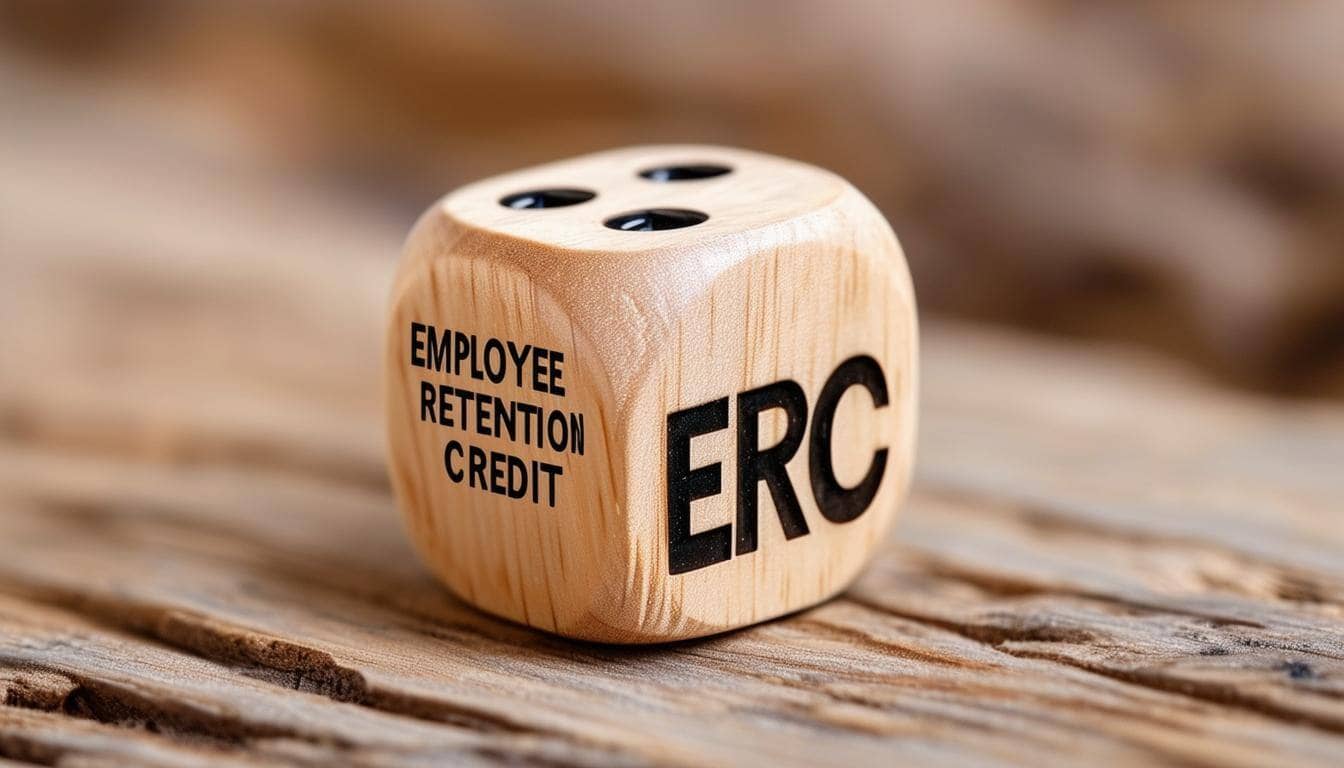A Business Owner’s Guide to Employee Retention Credits in 2024 (Updated November 2024)
September 15th, 2023
9 min read
By Jason Noble

Recent Updates
Is the IRS Still Accepting ERC Claims?
As of August 2024, the IRS has lifted the moratorium on processing Employee Retention Credit (ERC) claims filed between September 14, 2023, and January 31, 2024. Despite a proposed bill to extend the ERC filing deadline to January 31, 2024, the original deadline of April 15, 2025, remains in effect.
The IRS is diligently working to process ERC claims, focusing on low-risk submissions while investigating fraudulent claims. While the agency has started processing tens of thousands of valid claims, it has also issued disallowance letters to 28,000 ineligible claims. Individuals who receive a disallowance letter can initiate a formal appeal process.
Although the IRS plans to expedite the processing of valid claims and begin issuing refunds in September, the significant number of submissions may result in delays in payments.
What is the ERC Second Voluntary Disclosure Program?
In addition to the consolidated claim process, the IRS is offering a Second Voluntary Disclosure Program (VDP) for ERC claims:
- Deadline: This program is open until November 22, 2024.
- Purpose: The VDP allows businesses that mistakenly received an ERC to repay it, but they can keep 15% of the credit.
- How It Works: TPPs can help their clients navigate the VDP if they need to return ERC funds, and the IRS provides an FAQ for further guidance.
ERC Withdrawal Program
Businesses that have submitted ERC claims but have not yet received payment or have received payment but not deposited it can still withdraw their submissions. This Withdrawal Program is available to businesses that determine they may not be eligible for the tax credit. During the recent moratorium, the IRS reported that it had a backlog of 1.4 million pending ERC claims.
For those businesses that wish to avoid potential penalties or audits, the withdrawal program offers a pathway to proactively retract their claims. However, this program does come with specific guidelines and timelines, and businesses need to act quickly if they choose to take advantage of it. At Lift HCM, we can help evaluate whether a claim might be better withdrawn or modified under current IRS guidelines.
What’s the New Consolidated Claim Process for ERC?
The IRS has introduced a new consolidated claim process specifically for third-party payers (TPPs). This process is meant to speed up ERC claim corrections and allow TPPs to adjust previous claims for multiple clients without resubmitting everything. Here’s how it works:
- Who Can Use It: TPPs can use this consolidated claim process until November 22, 2024.
- Purpose: TPPs can “withdraw” ERC claims for certain clients while keeping claims for others intact.
- Requirements: TPPs must ensure that their consolidated claims:
- Only include clients who were part of a previous ERC claim.
- Do not increase the total ERC claimed for any clients.
TPPs must also include a specific statement (provided by the IRS) in their consolidated claim form to confirm these details
IRS Update on Processing ERC Claims
The IRS is working through a large number of ERC claims, with 400,000 claims in progress, representing about $10 billion in credits. Refunds for approved claims are being issued, and more will continue over the coming months. The IRS is moving as quickly as possible but is also focused on preventing fraudulent claims.
The IRS is accelerating its processing of Employee Retention Credit (ERC) claims, a key tax credit for businesses affected by COVID-19. While the agency is working to expedite the handling of these claims, it remains vigilant in monitoring for potential fraud or improper submissions. Our key points for business owners are listed below. See here for the full update from the IRS.
Key Points for Business Owners:
- Accelerated Processing: The IRS is working faster to process legitimate ERC claims, ensuring businesses can access funds sooner. The IRS will start processing claims filed between September 14, 2023, and January 31, 2024. Previously, the agency was not processing claims filed after the moratorium issued on September 14, 2023.
- Heightened Scrutiny: To combat fraud, the IRS is closely monitoring submissions. Your claims must be accurate and well-documented to avoid delays or penalties.
- Importance of Compliance: With the increased scrutiny, partnering with a knowledgeable payroll provider can help ensure your ERC claims are compliant and avoid red flags.
Our Lift HCM Takeaway:
It's good news that the IRS is providing updates and providing specific timelines. The last time this was done before August (not specific to incorrect claims) was June 20th. The IRS has a dedicated business helpline you can call at 800-829-4933.
Original Article
If you're like many business owners navigating the aftermath of the COVID-19 pandemic, you're probably struggling with more than just managing your day-to-day operations. Perhaps you're facing a significant drop in revenue, or you're trying to hold on to your employees despite financial uncertainty. It's frustrating to juggle these challenges while figuring out which relief programs can actually help your business stay afloat. The Employee Retention Credit (ERC) might be the answer, but understanding how to apply and qualify can feel like an uphill battle.
At Lift HCM, we get it. We’ve been right there with businesses like yours, helping them sift through complex tax credits and relief options. With years of expertise in payroll, HR, and compliance solutions, we've guided organizations through the intricacies of the ERC, making sure they maximize every available benefit.
In this article, we'll break down exactly what the ERC is, how it works, and how you can claim it to keep your business on track. By the end, you’ll have a clear understanding of the ERC's benefits, eligibility requirements, and the step-by-step process to apply for it. Let’s dive in and take the guesswork out of this important relief measure.
What is the Employee Retention Credit (ERC)?
The Employee Retention Credit (ERC) is a refundable tax credit available to eligible employers that retained employees during the COVID-19 pandemic. Initially introduced under the Coronavirus Aid, Relief, and Economic Security (CARES) Act in March 2020, the ERC was later extended and expanded through subsequent legislation, including the Consolidated Appropriations Act (CAA) of December 2020 and the American Rescue Plan Act (ARPA) of March 2021.
In simple terms, the ERC allows businesses to get back a percentage of wages they paid to employees during the pandemic. The best part? It’s refundable. This means that even if the credit is larger than the payroll taxes you owe, the IRS will refund the excess.
Eligibility: Does Your Business Qualify for ERC?
Before you start the application process, the first step is determining if your business qualifies for the Employee Retention Credit. Here is what you need in order to determine if your eligible:
1. Business Impact from COVID-19:
Your business must have been either partially or fully suspended by government orders due to the pandemic, or your gross receipts should have declined by a certain threshold (typically 50% or more in 2020, 20% or more in 2021).
2. Number of Employees:
For 2020, businesses with up to 100 full-time employees can claim the ERC. For 2021, this threshold increases to 500 employees. This applies to the definition of full-time employees, not counting part-time staff.
3. Wages Paid During Eligible Periods:
Wages paid during specific periods are eligible for ERC. In 2020, the credit was 50% of qualified wages (up to $10,000 per employee annually), while in 2021, the credit increased to 70% of wages, and the maximum increased to $10,000 per employee per quarter.
It’s essential to understand these criteria thoroughly to ensure that your business qualifies before proceeding with the application.
Step-by-Step Guide to Applying for ERC
Once you've determined your eligibility, the next step is to apply for the ERC. This process involves several critical stages:
1. Gather Your Documentation
The ERC application requires detailed documentation. Here's a checklist of what you’ll need:
- Payroll Records: Including wages paid, health insurance costs, and other compensation details.
- Revenue Records: Gross receipts documentation to demonstrate your business’s decline in revenue.
- Government Orders (if applicable): Proof of business suspension or restrictions due to government mandates.
Keep these documents organized and accessible for both the application and future audit purposes.
2. Calculate the Credit
Next, you need to calculate the total credit your business is eligible for. Here’s how to go about it:
- Determine Qualified Wages: Use your payroll records to identify wages that qualify for the ERC.
- Apply the Credit Percentage: For 2020, the credit is 50% of up to $10,000 in wages per employee (capped at $5,000 per employee annually). For 2021, it’s 70% of up to $10,000 per employee per quarter (capped at $7,000 per employee per quarter).
Let’s say your business paid $8,000 in qualified wages to an employee in Q1 of 2021. You could claim 70% of that amount, or $5,600, as a refundable tax credit for that employee for the quarter.
3. Complete IRS Form 941
The ERC is claimed on your business’s federal employment tax return using IRS Form 941 (Employer's Quarterly Federal Tax Return).
- If you haven’t yet filed for the applicable quarter(s), simply include the credit on Form 941 for the relevant period.
- If you already filed your Form 941 for the applicable period, don’t worry—you can go back and amend it using Form 941-X (Adjusted Employer's Quarterly Federal Tax Return or Claim for Refund).
4. Submit an Amended Form (if necessary)
If your business is applying for past periods, you’ll likely need to file an amended return. Here’s how to do it:
- Complete Form 941-X for the relevant quarter(s).
- Use the form to correct your originally filed Form 941, including your ERC calculation.
The IRS recommends you file electronically for the fastest processing time, though paper filing is also available.
5. Monitor and Respond to IRS Communications
Once your application is submitted, the IRS may reach out for additional documentation or clarification. Be prompt and thorough in your responses to avoid delays in processing your claim. Keep copies of all correspondence with the IRS and any supporting documentation related to your ERC claim.
Common Mistakes to Avoid When Applying for ERC
- Not Applying for All Eligible Quarters: Some businesses mistakenly believe they can only claim the ERC for one quarter. Ensure you review all applicable quarters from 2020 and 2021, as you may be eligible for additional credits.
- Misclassifying Employees: Only wages paid to full-time employees count toward the ERC in some cases. Make sure you properly classify your employees and calculate wages accurately.
- Not Accounting for PPP Loans: If your business received a Paycheck Protection Program (PPP) loan, you can still apply for ERC, but you cannot claim the ERC for wages paid with forgiven PPP funds. Make sure to exclude those wages when calculating your ERC claim.
Commonly Asked Questions About the Employee Retention Credit (ERC)
Q: Who qualifies for the ERC? To qualify for the ERC, businesses must meet one of two criteria:
- A full or partial suspension of operations due to COVID-19-related government orders.
- A significant decline in gross receipts compared to 2019. For 2020, gross receipts must have dropped by at least 50%, and for 2021, the threshold is 20%.
Q: How much can I claim under the ERC? The amount you can claim depends on the year:
- 2020: You can claim 50% of qualified wages, up to $5,000 per employee for the entire year.
- 2021: You can claim 70% of qualified wages, up to $7,000 per employee per quarter, which can total $28,000 per employee for the year.
Q: What wages qualify for the ERC? Qualified wages include all cash wages paid to employees, as well as employer-paid health benefits. For small employers (500 or fewer employees), all wages qualify, regardless of whether the employee is working. For larger employers (more than 500 employees), only wages paid to employees not providing services during the suspension of operations or reduced gross receipts period qualify.
Q: Can I claim the ERC if I already received a Paycheck Protection Program (PPP) loan? Yes! Initially, businesses couldn’t claim both the ERC and PPP. However, with the Consolidated Appropriations Act (CAA) of 2020, businesses can now claim the ERC for wages not covered by PPP loan forgiveness. Essentially, you can claim ERC on wages not paid by PPP funds.
Q: How do I apply for the ERC? To claim the ERC, you need to file the following IRS forms:
- Form 941: This is the standard form used to report payroll taxes, and you can claim the ERC when filing.
- Form 941-X: If you're claiming the ERC retroactively for a past quarter, you'll need to file this amendment form.
Q: When can I apply for the ERC? You can apply for the ERC in the quarter when your business meets the eligibility criteria. You can also file retroactively by amending your prior payroll tax filings with Form 941-X if your business qualified in past quarters but you didn’t claim the credit at the time.
Q: Can non-profit organizations claim the ERC? Yes, non-profit organizations, including 501(c)(3) organizations, are eligible to claim the ERC if they meet the gross receipts or full/partial suspension of operations requirements.
Q: Is the ERC considered taxable income? The ERC itself is not taxable income. However, any wages used to calculate the ERC cannot also be deducted as payroll expenses on your business’s federal income tax return. Essentially, you’ll need to reduce your wage deductions by the amount of ERC claimed.
Q: How long does it take to receive the ERC refund? Processing times can vary, but once you submit your ERC claim via Form 941 or Form 941-X, it may take several months to receive your refund from the IRS. The IRS has been working through a backlog, so patience is important.
Q: Can I claim the ERC for wages paid to family members? Generally, wages paid to family members or other individuals who have a close relationship with business owners are not eligible for the ERC. This includes wages paid to direct relatives such as children, siblings, parents, and spouses of owners or shareholders.
Q: What records should I keep to substantiate my ERC claim? To ensure you can defend your ERC claim if needed, you should maintain:
- Payroll records showing qualified wages.
- Documentation of how your business met the eligibility criteria (e.g., evidence of gross receipt declines or government-ordered shutdowns).
- Records of your calculations to support the credit amount claimed.
Q: How long is the ERC available? The ERC was initially available for wages paid from March 13, 2020, through December 31, 2021. Employers can still claim the credit retroactively by amending their payroll tax filings, but the credit cannot be claimed for wages paid after December 2021.
Q: What’s the difference between small and large employers in the ERC? The size of your business impacts how you can claim the ERC:
- Small employers (500 or fewer employees): You can claim the credit for all wages paid, even if the employees were still working.
- Large employers (more than 500 employees): You can only claim the credit for wages paid to employees who were not working due to the pandemic.
Q: What happens if my ERC exceeds my payroll tax liability? Since the ERC is refundable, if your credit exceeds your payroll tax liability, the excess amount will be refunded to your business. This means you can still benefit from the credit even if you owe little to no payroll tax.
What's Next for Your Business?
Now that you know the step-by-step process for applying for the Employee Retention Credit, it’s time to take action. The ERC can provide essential financial relief, allowing your business to retain employees and stay competitive during challenging economic periods. Make sure to consult with a tax professional if you have any questions or need assistance calculating your credit.
At Lift HCM, we help businesses like yours navigate complex tax credits and compliance requirements. Reach out to us if you need help managing your payroll, human capital, or understanding how to maximize the ERC for your business.
Jason Noble is a seasoned expert in payroll and human capital management. With a wealth of experience in streamlining payroll processes and optimizing workforce management, Jason has successfully held key roles at leading organizations. His deep understanding of industry best practices ensures that his insights are both practical and authoritative.
Topics:



